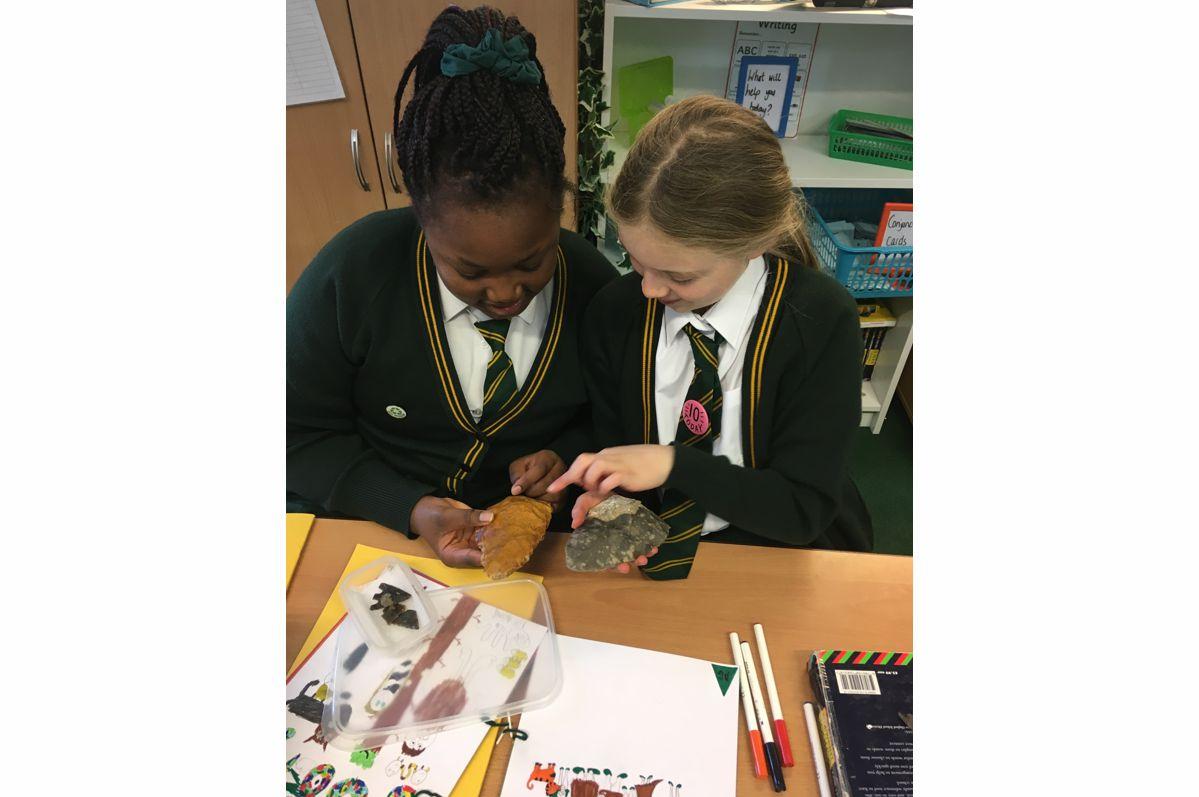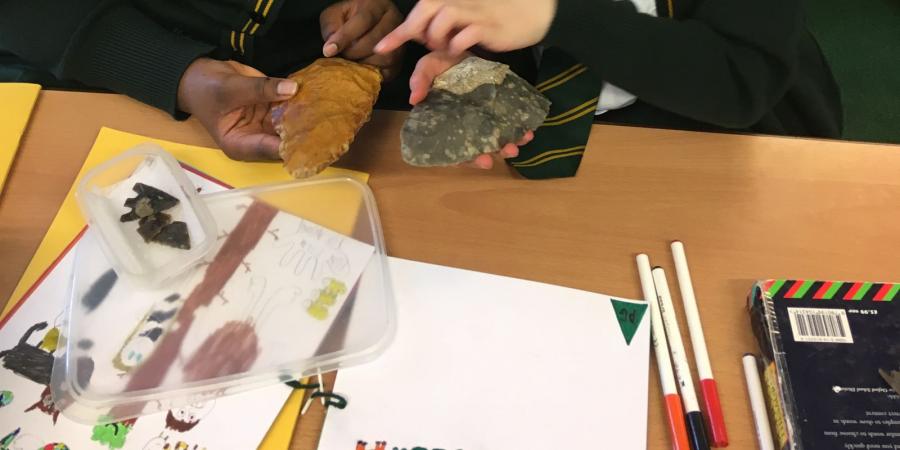I have just spent the morning with the year 5 pupils of St James’ C of E Primary School, Bournemouth. For the past five weeks they have been learning about prehistory so this was an opportunity to talk about how we use archaeology to find out about prehistory and a chance for the children to handle artefacts.
As a STEM Ambassador, I am involved with a programme to show how we use STEM subjects during archaeological analysis. Science and maths play a pivotal role in enabling us to understand many aspects of life in the past, and in class we looked at where people lived, what they ate, the types of clothes they might have worn, their technologies (tools, pottery manufacture, crop processing), the trade that was carried out with other countries, and their beliefs. The children asked lots of insightful questions, including ‘why did people start farming?’.
They were then able to look at some of the lovely artefacts in Wessex Archaeology’s school loan box, including a Palaeolithic hand axe, Mesolithic flint cores, an antler pick and hammer, a replica ceramic Beaker and charred plant remains. They compared the difference between Bronze Age flint-tempered pottery and Iron Age sand-tempered pottery. All the pupils had clearly learnt a great deal about prehistory during this half-term, and it was great to be able to give them the opportunity to use some of their identification skills, and hopefully inspire the next generation of archaeologists.

In this photograph, two students study a Palaeolithic handaxe and a replica, correctly identifying which is the real artefact.
